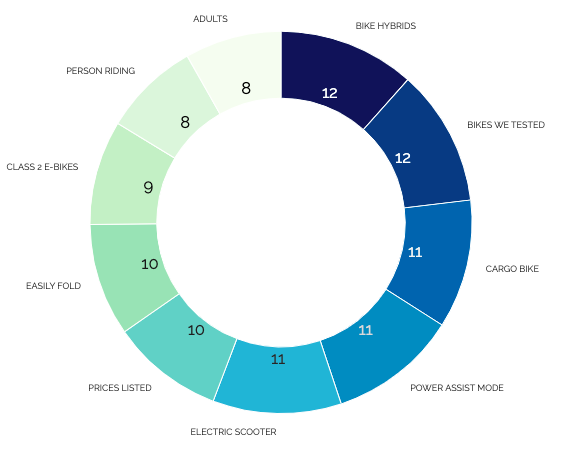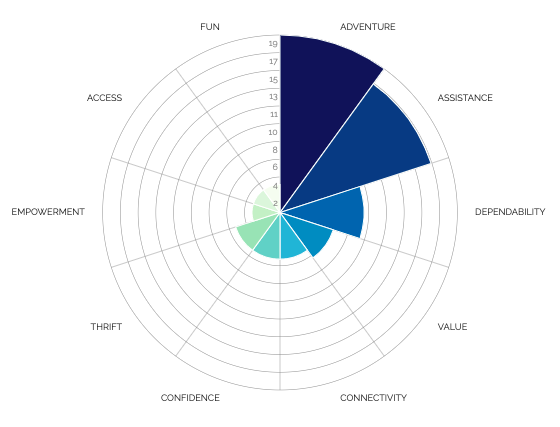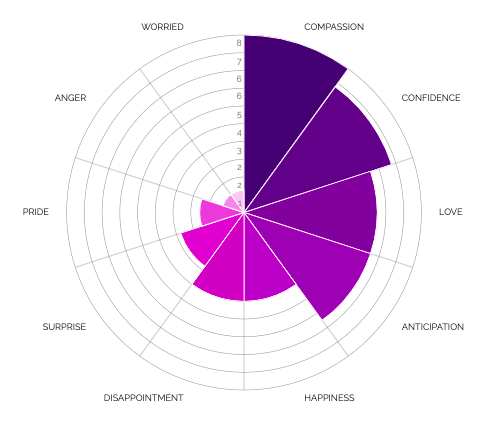People’s behavior is harder to understand than ever.
Sure, people are more willing to share. They’re more willing to write about their lives, post pictures of their families, offer up opinions on message boards, and write into customer complaint lines. They’re also giving up more data than ever before. Cellphone companies and data warehouses track where you are and when, who your friends are, and what you’re interested in. Yet in this era of unparalleled transparency and unfettered access to personal information, it’s harder than ever to figure out why people do what they do.
For years, we’ve been analyzing people’s behaviors, and the key to really understanding people is to keep the demo number-crunching, but also go deeper to examine their true motivators, values and now, emotions.
For instance, let’s look at the e-bike movement. Since stay-at-home orders hit last spring, outdoor gear of all kinds has been selling out. E-bikes have been credited with recharging the bike industry and causing bike sales to skyrocket. Bicycle Retailer cites NPD analysis stating that “E-bike growth has continued at historic levels. Electric bike sales were up 84% in March, 92% in April, and 137% in May” of 2020, and the trend is expected to continue.
Other than a novel exercise gadget, what’s really going on with this huge trend? Demographics can tell you only so much. Looking at the content for values and emotions exponentially broadens your understanding.
Concepts
Let’s start with WHAT’s in the data. The analysis for dominant themes, or concepts, provides an immediate understanding of the current issues and ideas around e-bikes. Insight emerges when you couple those Concepts with the Values.

Values:
- Adventure: Get outside for a fun solo experience or with your family
- Assistance: E-bikes give that extra assist when you need the power
- Dependability: These bikes will get you up those tough hills, kids or groceries in tow

Emotions:
- Compassion: A deeper feeling of concern for others, for nature and sustainability
- Confidence: This might be the element needed to make biking a more regular activity, that you’ll have the extra muscle when you need it
- Love: A powerful emotion–riders love these bikes

Analysis:
- The Values analysis alone tells a compelling story about consumer drivers, but when combined with Emotions, you begin to understand the untapped feelings that can resonate on a deeper level and generate word of mouth.
- The Concepts analysis shows that the e-bike models are expanding, appealing to a broad range of price points, abilities, and need states. With that, you’re better able to build messaging directed specifically to your intended audience.
So, what are the differences between values and emotions?
Values drive our choices and are a key to what’s really important to us.
Values are basic and fundamental beliefs or needs that help us determine what is important to us, and in many ways function to establish our identity. When our actions/situations are consistent with our values, positive emotions are produced. When our actions/situations conflict with these values, negative emotions result.
Emotions are what we are feeling and can often dictate or influence decision making.
Emotions are complex psychological experiences resulting from something we experience or interact with–a person, place, or thing–and is different from reasoning or knowledge. Emotions can easily cloud judgment or may override values when the emotions are particularly strong or intense. People then choose whether to act on their “gut” (feelings) or slow down and use reason to decide.
We believe that considering both values and emotions provides additional depth and understanding of the customer mindset. We’ve been working with values for decades but now adding emotions to our analysis allows for a much more interesting and nuanced story about why people do what they do.

